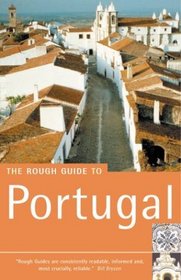Search -
Rough Guide to Portugal 10 (Rough Guide Travel Guides)
Rough Guide to Portugal 10 - Rough Guide Travel Guides
Author:
INTRODUCTION Portugal is an astonishingly beautiful country; the rivers, forests and lush valleys of the north are a splendid contrast to its contorted southern coastline of beaches, cliffs and coves. If you’ve come from the arid plains of central Spain, Portugal’s dry southern Alentejo region doesn’t promise any immediate relief... more »
Author:
INTRODUCTION Portugal is an astonishingly beautiful country; the rivers, forests and lush valleys of the north are a splendid contrast to its contorted southern coastline of beaches, cliffs and coves. If you’ve come from the arid plains of central Spain, Portugal’s dry southern Alentejo region doesn’t promise any immediate relief... more »
ISBN-13: 9781858288772
ISBN-10: 1858288770
Publication Date: 12/30/2002
Pages: 720
Rating: 1
ISBN-10: 1858288770
Publication Date: 12/30/2002
Pages: 720
Rating: 1
3 stars, based on 1 rating
Genres:
- Travel >> Europe >> Portugal >> General
- Travel >> Europe >> Spain >> General
- Travel >> Guidebook Series >> Rough Guide




